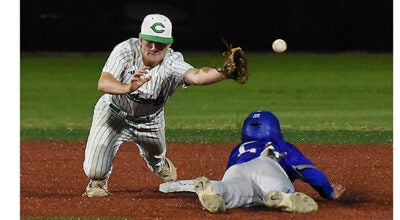Bizarre Te’o story highlights weird week
Published 12:01 am Sunday, January 20, 2013
What a week it’s been in the world of sports.
As I’m sure everyone is well aware by now, this past week was highlighted by what has to be one of the most bizarre stories anyone has ever heard.
Star Notre Dame linebacker Manti Te’o’s girlfriend, who supposedly died of leukemia the same day Te’o lost his grandmother during the season, turned out to be an Internet hoax. She simply didn’t exist, but was the creation of a Twitter account.
Meanwhile, former seven-time Tour De France winner Lance Armstrong admitted in an Oprah interview that he used performance-enhancing drugs.
But there’s more: Yankees third baseman Alex Rodriguez had surgery to repair a torn labrum in his hip. NFL quarterback Tim Tebow can’t seem to find any suitors willing to take a chance on him. Tiger Woods and Rory McIlroy both missed the cut at the Abu Dhabi Championship.
All that was missing is the announcement by Brett Favre that he’s coming out of retirement.
All joking aside — and there were plenty of jokes being thrown around — the Te’o story has truly become a sight to behold as more and more information comes out.
The initial shock and horror when sports fans were made aware of the hoax quickly turned into mass confusion as media outlets began to gather information. The results were nothing short of a convoluted mess.
Te’o says he lied to his father about meeting his alleged girlfriend. That would explain reports that had Te’o’s father saying they met after the Notre Dame-Stanford game in 2009 and had them spending time together in Hawaii in 2010 and 2011. Te’o said he didn’t want people to think he was crazy for not meeting a girl he was dating.
One report by the Honolulu Star Advertiser says Te’o told family and friends that his fake girlfriend told him she had to fake her death to elude drug dealers. By the time you’re reading this, it wouldn’t surprise me in the slightest if a new report has come out that further muddy the waters.
Trying to make sense of this is, well, senseless. The story has so many facets that I’m not sure if the truth of what really happened will ever fully be realized.
What we do know is this: Te’o was made aware on Dec. 6 that this whole thing was a masquerade. He notified Notre Dame officials of the hoax Dec. 26.
This begs the question, why didn’t Te’o publically acknowledge the scam between Dec. 6, when he found out, and Wednesday? Furthermore, if Notre Dame knew about it since Dec. 26, why didn’t the university acknowledge it before Deadspin’s report?
Speculation has run rampant trying to answer those questions, but one question that also needs to be answered is, why wasn’t this story fact-checked by those who were disseminating it during the season?
Deadspin, to its credit, did the research necessary to expose this lie. But how difficult could it have been for ESPN or Sports Illustrated to confirm the enrollment of Te’o’s “girlfriend” at Stanford, where she was alleged to be a student? How difficult could it have been to seek an obituary?
Almost lost in the sea of perplexity surrounding this story is an important journalistic lesson to confirm what’s being told to you. The major media outlets that propped up Te’o’s sob story failed in that regard, and now have egg on their faces.
What will go down as one of sports’ most unbelievable stories of all time will no doubt also go down as a classic example of why it’s important to fact-check. Journalism as a profession must be ready next time.
Michael Kerekes is the sports editor of The Natchez Democrat. He can be reached at 601-445-3633 or michael.kerekes@natchezdemocrat.com.





